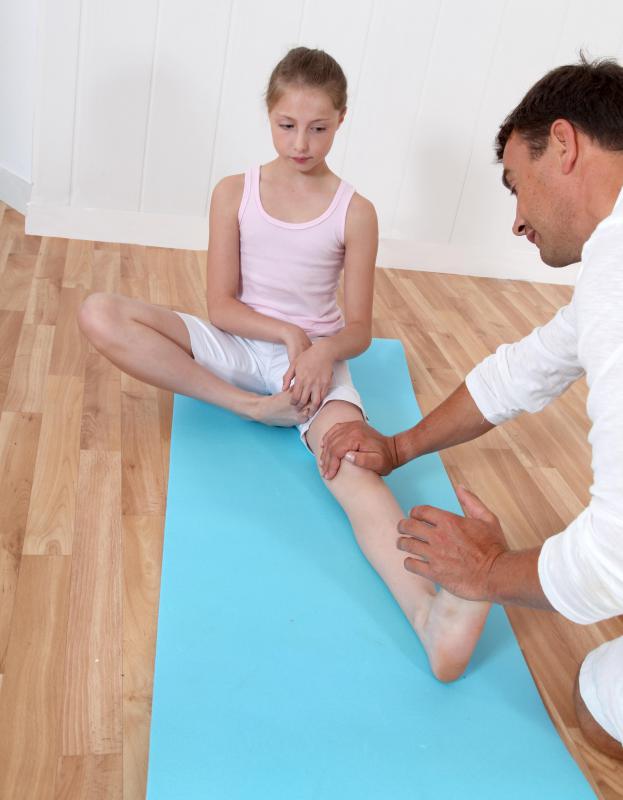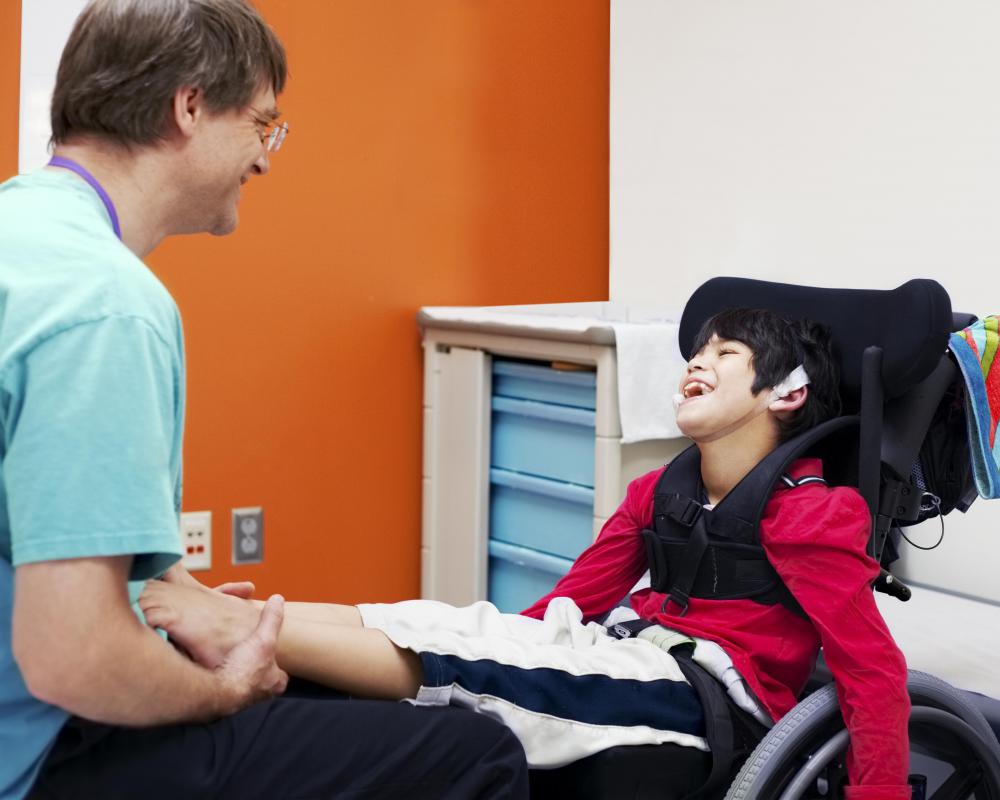At TheHealthBoard, we're committed to delivering accurate, trustworthy information. Our expert-authored content is rigorously fact-checked and sourced from credible authorities. Discover how we uphold the highest standards in providing you with reliable knowledge.
What Is Pediatric Physiotherapy?
Pediatric physiotherapy, also called pediatric physical therapy, is a type of health care that focuses on treating injuries and disabilities that children may experience. More particularly, physiotherapy for children deals with teaching children how to physically maneuver through environments. Activities that involve climbing, navigating obstacles, and exploring are used to increase mobility, strength, and range of motion in children who have difficulty due to an injury or disability.
Similar to other types of physiotherapy, pediatric physiotherapy deals with physical deficiencies in movement. It is commonly used as part of a treatment plan for children who suffer from conditions or diseases that limit movement or prevent proper treatment. This type of physical therapy can also be used when a child suffers from an injury or surgical procedure that temporarily impedes movement. The goal is to help the child achieve age-appropriate developmental skills.

Although physical therapists generally study all branches of physiotherapy, pediatric physiotherapy is performed by a pediatric physical therapist. These physical therapists specifically work with children from birth to 18 years old. Therapy begins with an evaluation and assessment. The therapist determines which areas in which performance is hindered. After the assessment, the therapist creates a custom program of activities that address the problem areas.

Pediatric physiotherapy involves stretching, gross motor skill exercises, and muscle strengthening. Typically, the therapist uses forms of play to keep children motivated. He or she may also use games and toys, depending on the activity and area of trouble. A therapist focuses on the child and maximizing efforts to help the child learn to overcome difficulties. Common areas of focus include coordination and balance, climbing and riding, and navigating obstacles.

Deficiencies in coordination and balance control are important aspects that keep children from falling easily. Some children have difficulty determining the relation of the body to the amount of support the body provides, resulting in balance deficiencies. Other children cannot control movement in a coordinated manner. To help in this area, pediatric physiotherapy may involve the use of a large exercise ball in activities.

Many young children have difficulty with climbing and riding on toys. They may not be able to figure out how to get on the toy or they may not be able to figure out how to move once they have gotten on the toy. Generally, motor coordination, range of motion, or strength are deficient areas that cause this problem and can be addressed with pediatric physiotherapy.

It is important for children to be able to navigate different obstacles while moving around throughout the day. Coordinating the movement of all the body parts to accomplish this task can be an issue for some children. Pediatric physiotherapy can teach children to gain stability and strength necessary to transfer weight and coordination required to move around obstacles.
AS FEATURED ON:
AS FEATURED ON:















Discuss this Article
Post your comments